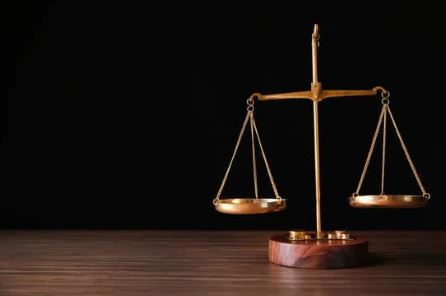A Piercing Look at Corporate Personality

Authors: Jason Mohrbutter, Tava Burton
Business people are generally aware that a company is a separate legal “person” and, by its creation, limits the personal liability of any individual officer, director or shareholder for its behaviour. However, all should be mindful of the exceptions to this general principle both at common law and by statute.
Corporate Separateness
This legal principle has been around since the 1800s, established in the seminal House of Lords decision, Salomon v. Salomon & Co. Ltd. [1896] UKHL 1 where it held, as all modern corporate law statutes also state, a corporation is an entity separate from its shareholders, who are not ordinarily liable for its debts.
The separate legal identity of corporations is routinely upheld. Separation of the legal personality of a corporation will not be disregarded lightly and “corporate separateness is the rule” (Edgington v Mulek, 2008 BCCA 505 at paras 20-21). This separation is also regularly observed as between parent corporations and their subsidiaries (Dowd v Skip the Dishes, 2019 MBQB 63 at paras 104-105).
Behind the Veil
There are limited circumstances where the courts will “look behind” or “lift the corporate veil” to find individuals responsible for bad company acts, including holding them liable for misconduct or debts of the corporation.
Some commentators complain the authorities in this area are an amalgam of vaguely stated platitudes. This is a fair criticism in certain respects and there are some differences in approaches taken by Courts across the country. However, it is clear enough that the circumstances to lift the veil remain narrow. It should not be lifted “absent extraordinary circumstances” or at least only “sparingly” (Yaiguaje v Chevron Corporation, 2018 ONCA 472 at para 70 [Yaiguaje] and Holmes v Jastek, 2019 SKCA 132 at para 121 [Holmes]).
Policy Behind Separation
Attempts to introduce a broad and overriding exception to corporate separateness wherever it is “just and equitable” to do have not been recognized (Yaiguaje at 67). This is viewed as too uncertain a standard to apply fairly. As noted by the Ontario Court of Appeal, such an elastic standard would not be appropriate given the clear statutory language in business corporation legislation across Canada.
Such a position “would also have a significant policy impact on how corporations carry on business in Canada. Corporations have stakeholders. Creditors, shareholders, and employees, among others, rely on the corporate separateness doctrine that is long-established in our jurisprudence and that is a deliberate policy choice made in the CBCA. Those stakeholders have a reasonable expectation that when they do business with a Canadian corporation, they need only consider the liabilities of that corporation” (Yaiguaje at 61).
Many Courts have long noted these business realities of dealing with corporations. “The use of a company as a means of avoiding bearing business losses is neither unusual nor a basis for lifting the veil ”(B.G. Preeco v Bon Street 1989 60 DLR (4th) 30 (BC CA).
Akin to Fraud
Many Courts across Canada make clear that they will not disregard the separate legal personality of a corporate entity in the absence of conduct tantamount to fraud (Yaiguaje at 66, Emtwo Properties v Cineplex 2011 BCSC 1072 at para 128). The corporate veil is typically pierced only when the company is “incorporated for an illegal, fraudulent or improper purpose and is a mere façade concealing the true facts.” It is where the corporate form is being abused such that it is not a truly separate corporation and is being used to facilitate fraudulent or improper conduct that the law recognizes an exception to the rule (Shoppers Drug Mart Inc. v 6470360 Canada Inc., 2014 ONCA 85, Yaiguaje at 66) .
Other Courts articulate a similar test requiring a demonstration that the individual “completed dominated and controlled” a company to use “as a shield.” Second, the conduct of the person completely dominating and controlling the company must “be akin to fraud” (Agmotion v Mcdermit, 2018 SKQB 100 at paras 21, 28).
Based on recent authority, it would go too far to say that conduct tantamount to fraud is always required. In Holmes, Ottenbreit J.A. writing on behalf of the Saskatchewan Court of Appeal recently noted lifting the veil will not always be restricted “to situations of fraudulent or improper conduct or agency.”
Instead, “each case is dependent on its own facts” and situations where a company is a “mere puppet” of a shareholder or parent corporation could justify lifting the veil even though conduct tantamount to fraud is not present. Justice Ottenbreit noted that “the corporate veil must only be pierced sparingly and not every case of mere corporate agency will result in the lifting of a corporate veil.” He also rejected the notion that the veil could be lifted “on the sole ground that it would be inequitable not to do so” (paras 120-123). The facts of the case should be considered within these basic parameters.
This case dealt with a cancellation of a condominium project, amounting to a breach of contract. After permit applications fell through, buildings were constructed on the same land by a related suite of companies. The purchasers of units in the original buildings brought an action to hold the owner of the land liable.
The Court of Appeal reversed the Chamber’s decision and pierced the corporate veil after reviewing the true mechanics of three companies that were used to develop the project. All three corporate personalities led back to a numbered Saskatchewan company, majority-owned and controlled by Mr. Jastek (Holmes at paras 136 and 139). The Court relied on the following factors to trace liability back to the parent corporation:
- Whether the profits were “treated” as profits of the parent or of the subsidiary;
- Whether the individuals involved in the day-to-day operations were appointed by the parent;
- Whether the parent corporation was the “brains” behind the day-to-day operation;
- Whether the parent corporation made policy and financial decisions that were merely carried out by the subsidiary;
- Whether the profits were directly traceable to the skill and direction of the parent; and
- Whether control by the parent was constant, as would be the case in a typical principal-agent situation, or merely periodic and long range, as might occur in a typical corporation-shareholder situation (Holmes at para 33).
Precision Required
Given the narrow path to pierce the veil, Courts have also routinely struck bald or vague claims. Precision is required to sufficiently plead the various elements required to potentially pierce the veil. In T&C Arndt Minerals v Silver Spur Resources, 2018 SKQB 337 the Court struck a claim against a sole shareholder and director of a company due to a failure to sufficiently plead material facts to establish what was objectionable about the conduct of the sole director and shareholder. The plaintiff attempted to provide particulars but was unable to sufficiently delineate the required elements.
Dowd v Skip the Dishes, is another example. Here, a claim was asserted against an individual and four companies said to be each liable for the acts of each other in allegedly misappropriating confidential information of the plaintiff.
[105] There is clear precedent in our law to steer away from piercing the corporate veil, or inferring liability on subsidiaries or related corporate entities except in very narrow circumstances. To meet those exceptional circumstances, the plaintiffs in this case, must plead sufficient material facts to convince the court to ignore the bedrock principles of corporate separateness.
Despite providing particulars, the Court still found the pleadings to merely lump several defendants and the alleged misconduct together without adequate delineation. These cases are consistent with the Courts’ respect for corporate separateness and the need for the presence of some misconduct.
Statutory Liability
There are two main streams of statutory liability for directors and officers. First is the responsibility of wage related deductions and benefits and tax remittances. The second relates to statutory offences: environment and criminal liability. Another statutory area that will not be discussed further relates to persons who qualify as “complainants” under business corporation legislation who may have forms of redress under the oppression remedy provisions against directors and officers.
Wage-based and tax remittance liability
Corporate and employment legislation in Canada specifically provides that directors can be held personally liable for up to six months of unpaid wages.
Generally, liability will only apply to directors who were holding their position at the time the deductions or remittances were not conducted properly. This ensures that present and future management are not punished for the wrongs of the past directors. There is also a six-month window after two specific proceedings for which directors and officers may be liable: a commencement of liquidation or dissolution proceedings or making an assignment in bankruptcy. If there is a claim for an amount within the six-month window, directors and officers can be liable.
Throughout the legislation, federal and provincial, the general defence for directors and officers is where they have exercised the degree of care, diligence, and skill that a reasonably prudent person would have exercised in comparable circumstances.
Examples of statutory liability can be found in the following statutes: Canada Pension Plan Act: failing to remit deductions (21.1), Employment Insurance Act: failing to remit deductions and for acts or omissions (38, 39, 83), Income Tax Act: failing to remit source deductions or share redemption percentages (135(1), 135.1(7), 227.1), Excise Tax Act: Failing to remit an amount of unpaid GST (323(1)), The Saskatchewan Employment Act: failing to pay wages due and accruing due (including salary, commission, overtime, public holiday pay, vacation pay, and severance pay) (2-68), The Revenue and Financial Service Act: failing to collect, or to collect and failing to remit PST (48.1(2)).
Statutory offence liability
Under both provincial and federal environment protection legislation, directors fall under “persons responsible” and can be held liable for offences of the corporation regardless of whether the corporation has been prosecuted and convicted. Typically these offences relate to adverse effects on land, including discharge or presence of a substance, no matter the ownership of the land.
Directors should be alert to their decision-making indications, as the broad range of actions are considered for environmental liability: directing, authorizing, assenting to, acquiescing in, or participating in, an act or omission as it relates to an environmental offence. Often in bylaws, dissents must be formally noted in meeting minutes; simply abstaining often does not amount to dissenting to a motion or decision in meetings.
Criminal liability can also be attributed to directors under Canada’s Criminal Code. Some examples include:
- Offences of negligence and other offences (22.1)
- Brokers reducing stock by selling for their own account (384 (1))
- Taking part in fraud (418(2))
- Threats and retaliation against employees (425.1(1))
The separate legal entity of a corporation facilitates and brings clarity to business transactions in Canada. However, those involved either as executives, officers, or shareholders must remain mindful of the circumstances in which they can be found personally liable for the actions of the corporation.
Note: This article is of a general nature only and is not exhaustive of all possible legal rights or remedies. In addition, laws may change over time and should be interpreted only in the context of particular circumstances such that these materials are not intended to be relied upon or taken as legal advice or opinion. Readers should consult a legal professional for specific advice in any particular situation.



